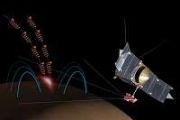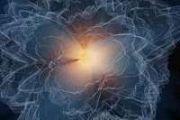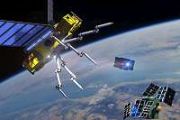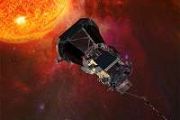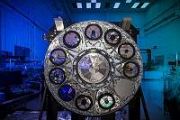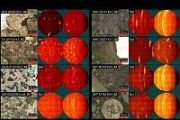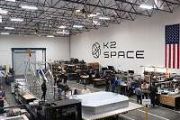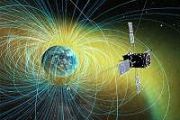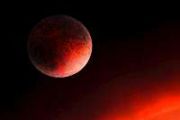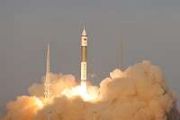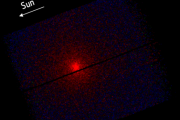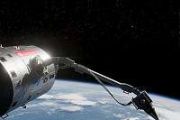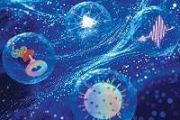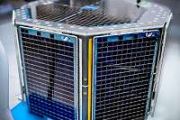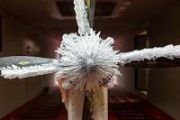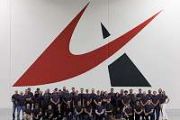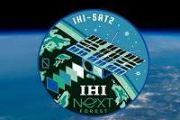
Copernical Team
NASA, NOAA rank the 2024 Ozone Hole as 7th-smallest since recovery began
 Healing continues in the atmosphere over the Antarctic: a hole that opens annually in the ozone layer over Earth's southern pole was relatively small in 2024 compared to other years. Scientists with NASA and the National Oceanic and Atmospheric Administration (NOAA) project the ozone layer could fully recover by 2066.
During the peak of ozone depletion season from Sept. 7 through Oct. 13,
Healing continues in the atmosphere over the Antarctic: a hole that opens annually in the ozone layer over Earth's southern pole was relatively small in 2024 compared to other years. Scientists with NASA and the National Oceanic and Atmospheric Administration (NOAA) project the ozone layer could fully recover by 2066.
During the peak of ozone depletion season from Sept. 7 through Oct. 13, Gilmour Space secures historic Australian permit for Eris orbital launch test flight
 Australia's first-ever orbital launch permit has been awarded to Gilmour Space Technologies, enabling the company to proceed with its Eris rocket's maiden flight from Bowen Orbital Spaceport in north Queensland. Granted by Minister for Industry and Science Ed Husic MP and the Australian Space Agency, the permit represents a landmark in Australia's space exploration capabilities.
The launch
Australia's first-ever orbital launch permit has been awarded to Gilmour Space Technologies, enabling the company to proceed with its Eris rocket's maiden flight from Bowen Orbital Spaceport in north Queensland. Granted by Minister for Industry and Science Ed Husic MP and the Australian Space Agency, the permit represents a landmark in Australia's space exploration capabilities.
The launch SpaceX launches resupply mission to International Space Station
 SpaceX successfully launched its Falcon 9 rocket on Monday night, sending over 6,000 pounds of essential cargo, including a range of science and student-led experiments, to the International Space Station (ISS). The mission lifted off from Kennedy Space Center at 9:29 p.m. EST and is scheduled to reach the station by 10:15 a.m. EST on Tuesday.
The Dragon capsule on this 31st Commercial Res
SpaceX successfully launched its Falcon 9 rocket on Monday night, sending over 6,000 pounds of essential cargo, including a range of science and student-led experiments, to the International Space Station (ISS). The mission lifted off from Kennedy Space Center at 9:29 p.m. EST and is scheduled to reach the station by 10:15 a.m. EST on Tuesday.
The Dragon capsule on this 31st Commercial Res Final Venus Flyby sets up Parker Solar Probe for closest sun skim
 On Wednesday, Nov. 6, 2024, NASA's Parker Solar Probe will complete its final Venus gravity assist maneuver, passing within 233 miles (376 km) of Venus' surface. The flyby will adjust Parker's trajectory into its final orbital configuration, bringing the spacecraft to within an unprecedented 3.86 million miles of the solar surface on Dec. 24, 2024. It will be the closest any human made object ha
On Wednesday, Nov. 6, 2024, NASA's Parker Solar Probe will complete its final Venus gravity assist maneuver, passing within 233 miles (376 km) of Venus' surface. The flyby will adjust Parker's trajectory into its final orbital configuration, bringing the spacecraft to within an unprecedented 3.86 million miles of the solar surface on Dec. 24, 2024. It will be the closest any human made object ha Japan successfully launches a defense satellite carried by a new flagship H3 rocket
This request seems a bit unusual, so we need to confirm that you're human. Please press and hold the button until it turns completely green. Thank you for your cooperation!
Press and hold the button
If you believe this is an error, please contact our support team.
185.132.36.159 : a37b1fce-3687-4aeb-817e-7d9f74bf
Apophis: A new European space mission could get up close with a large asteroid that's set to brush by Earth
This request seems a bit unusual, so we need to confirm that you're human. Please press and hold the button until it turns completely green. Thank you for your cooperation!
Press and hold the button
If you believe this is an error, please contact our support team.
185.132.36.159 : f4555b4b-b85b-4f4f-8d8c-ffc5618c
Communications user terminal prepares for historic moon flyby
This request seems a bit unusual, so we need to confirm that you're human. Please press and hold the button until it turns completely green. Thank you for your cooperation!
Press and hold the button
If you believe this is an error, please contact our support team.
185.132.36.159 : 61523cd3-a570-4b12-94e4-a589df73
Australia axes $7bn military satellite project
 In a significant blow to Australia's defence capabilities, the federal government is cancelling what would have been the nation's largest-ever space project: a A$7 billion military satellite communications system.
The decision was confirmed in a press statement today. It comes just 18 months after the Albanese government gave the green light to the ambitious program.
Defence industry
In a significant blow to Australia's defence capabilities, the federal government is cancelling what would have been the nation's largest-ever space project: a A$7 billion military satellite communications system.
The decision was confirmed in a press statement today. It comes just 18 months after the Albanese government gave the green light to the ambitious program.
Defence industry China space station crew returns to Earth after 6 months in space
This request seems a bit unusual, so we need to confirm that you're human. Please press and hold the button until it turns completely green. Thank you for your cooperation!
Press and hold the button
If you believe this is an error, please contact our support team.
185.132.36.159 : 551c4c72-d550-4f95-accd-448a39ab
Japan launches a defense satellite carried by a new flagship H3 rocket
This request seems a bit unusual, so we need to confirm that you're human. Please press and hold the button until it turns completely green. Thank you for your cooperation!
Press and hold the button
If you believe this is an error, please contact our support team.
185.132.36.159 : 696125d9-d470-4f3c-8591-214d169d



